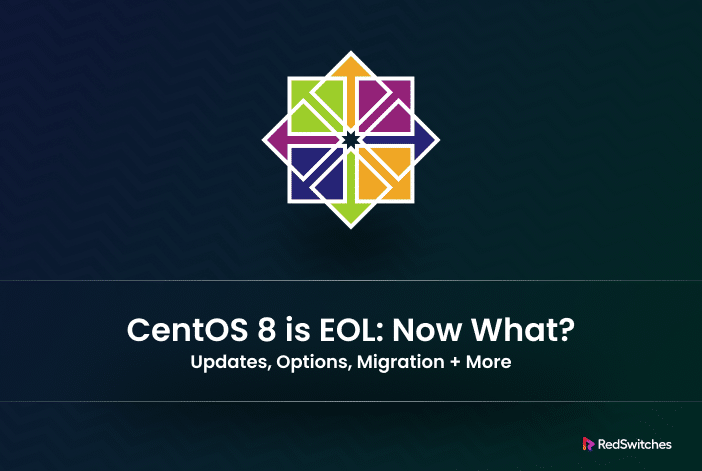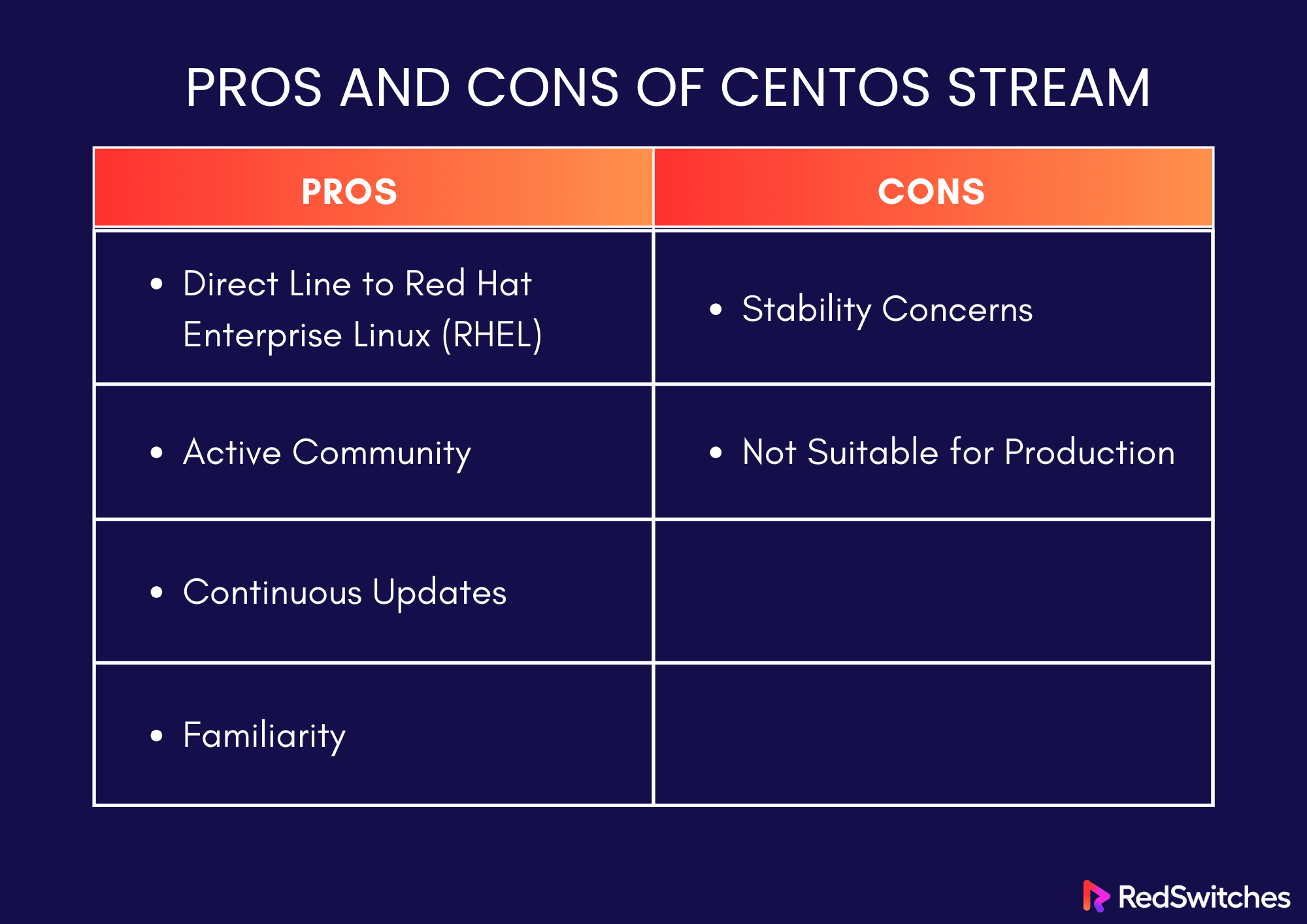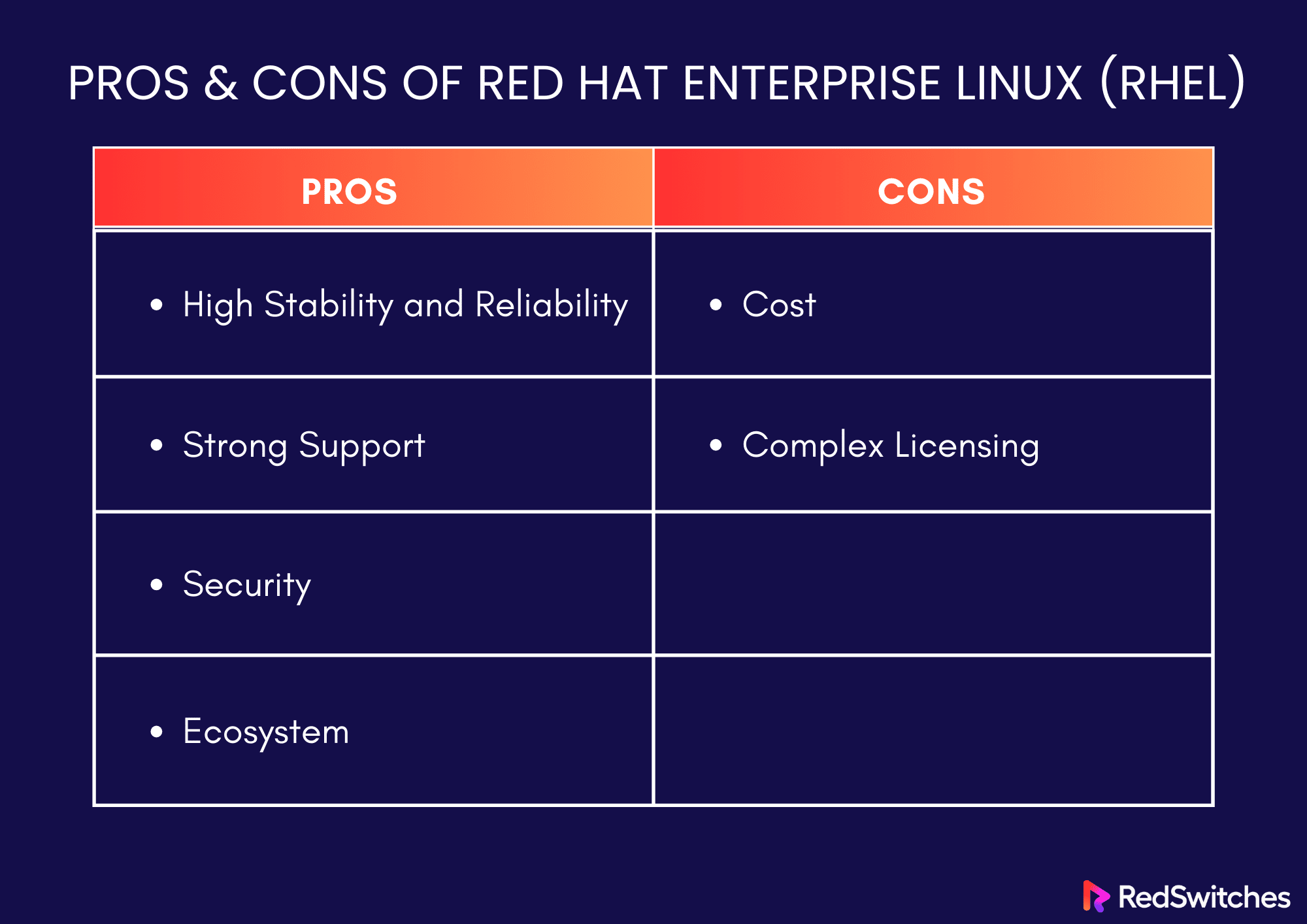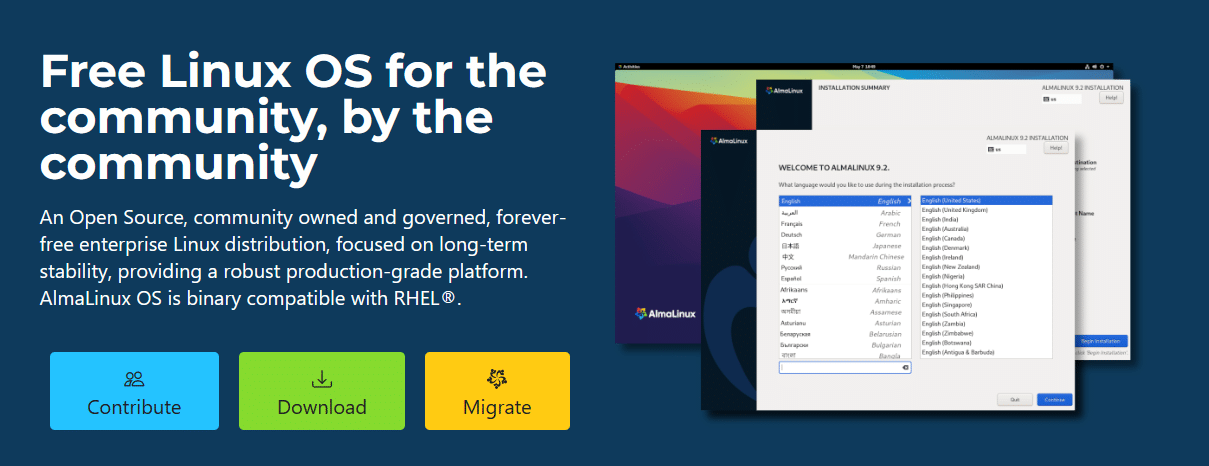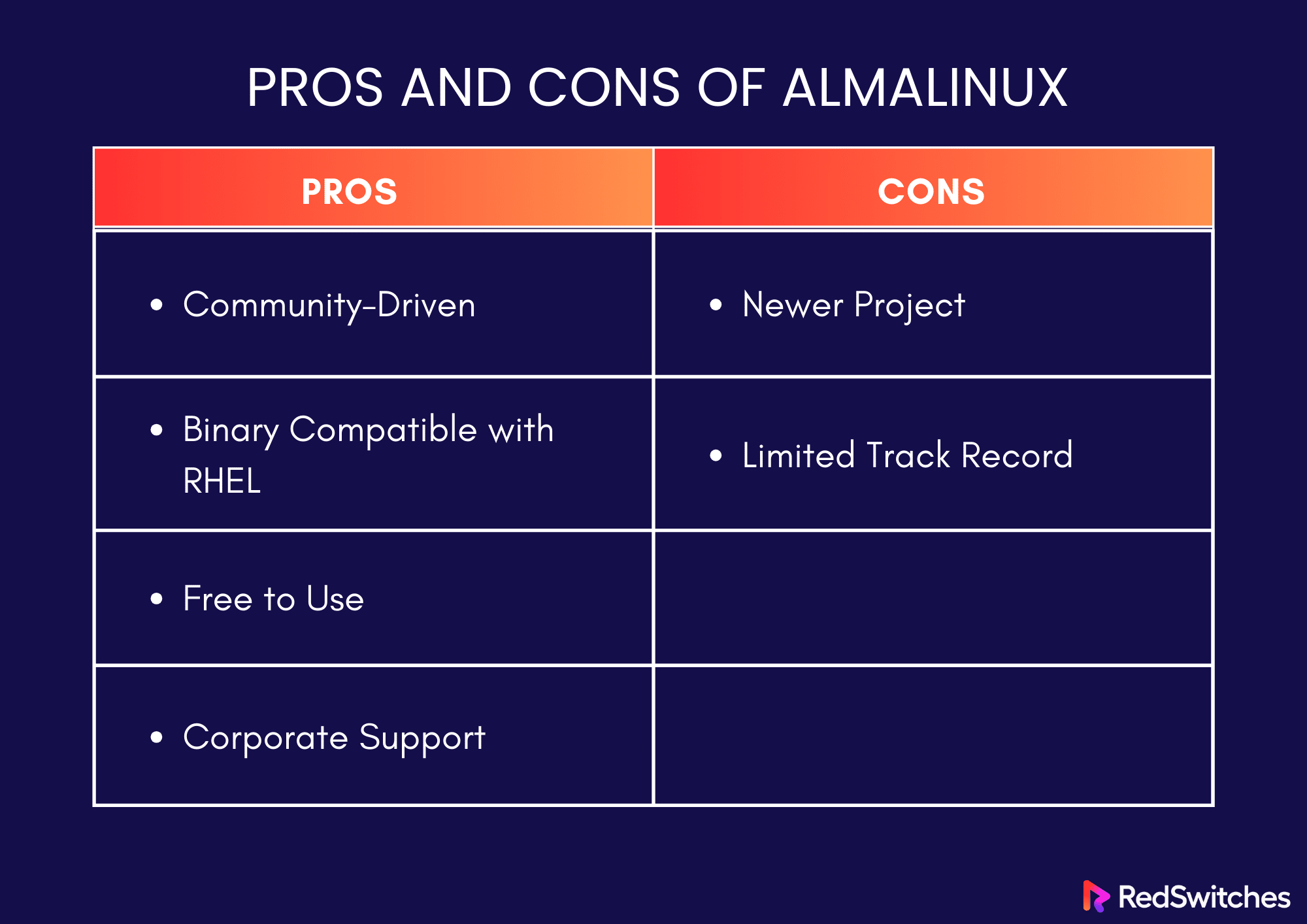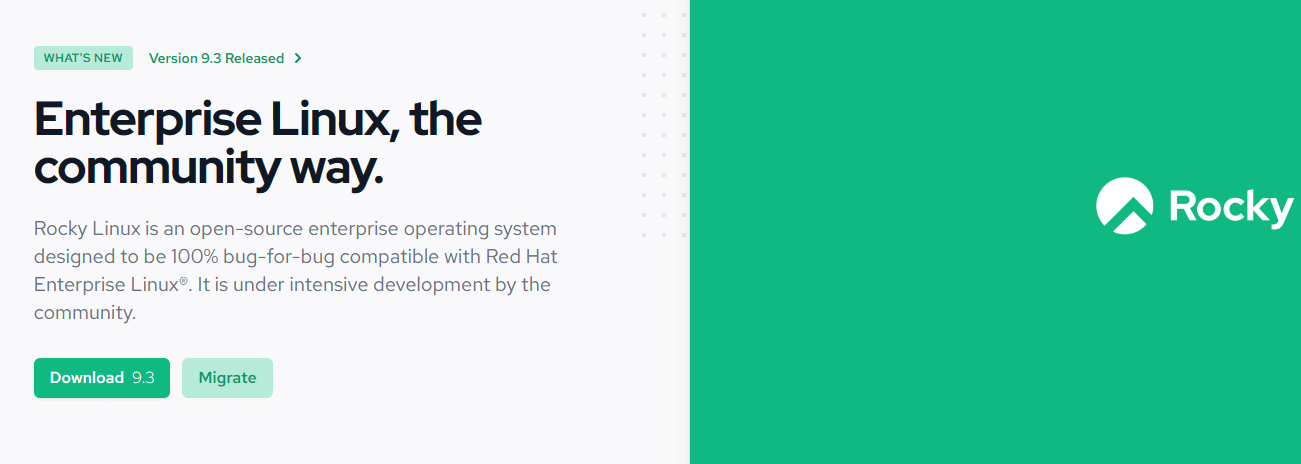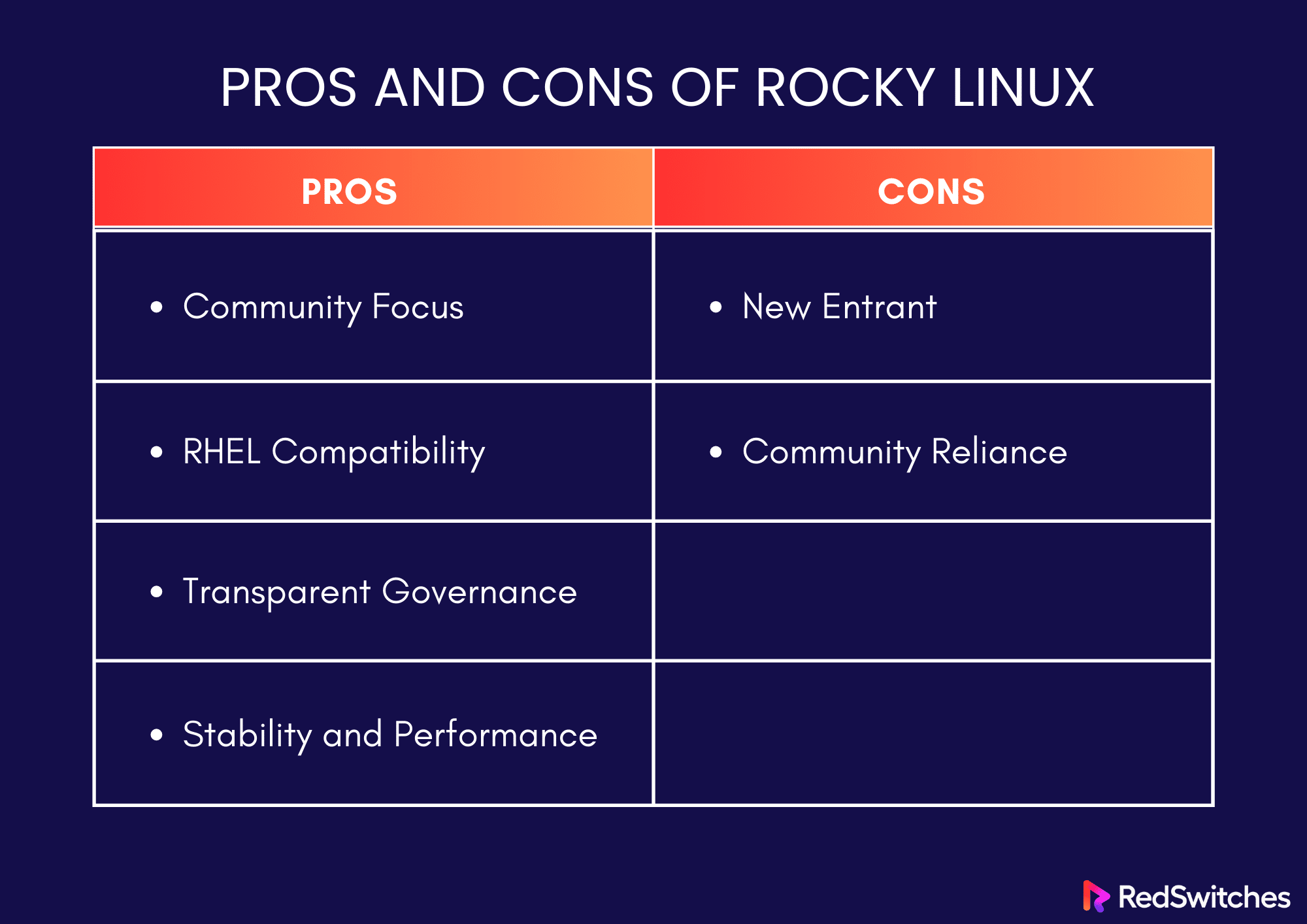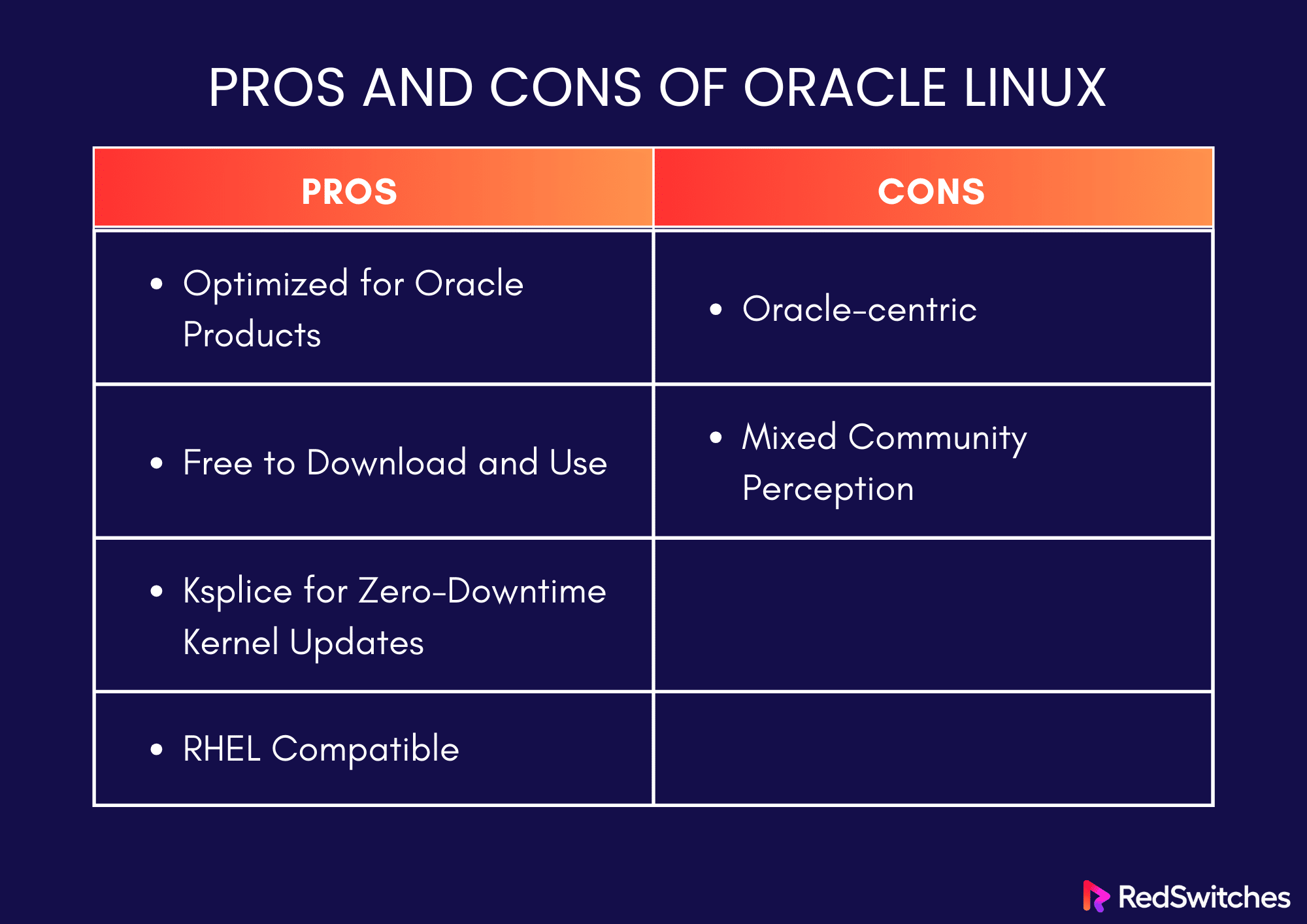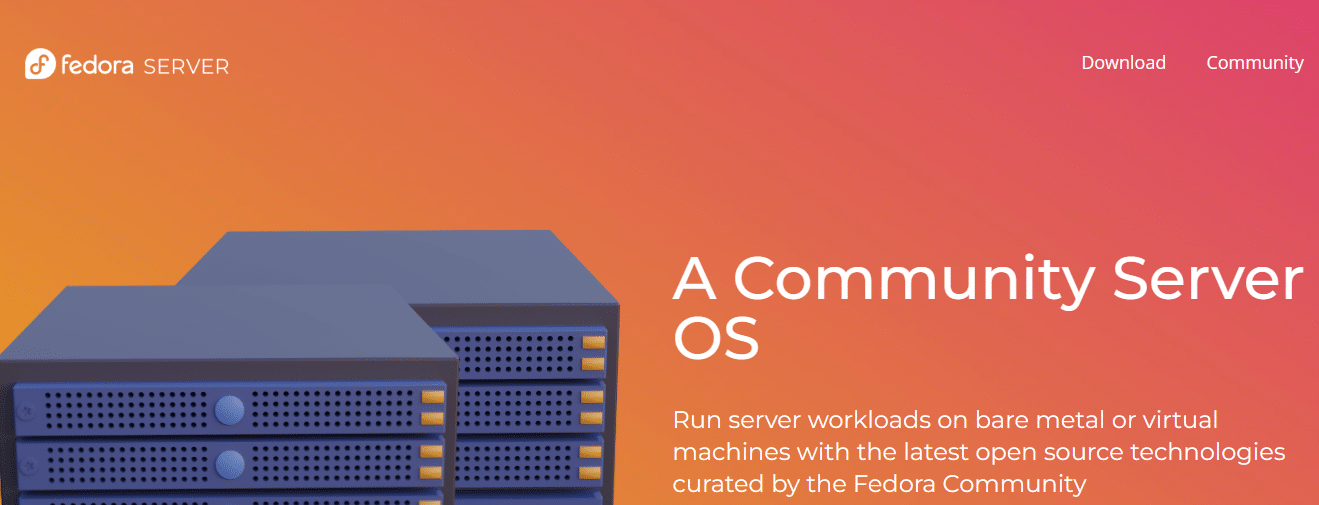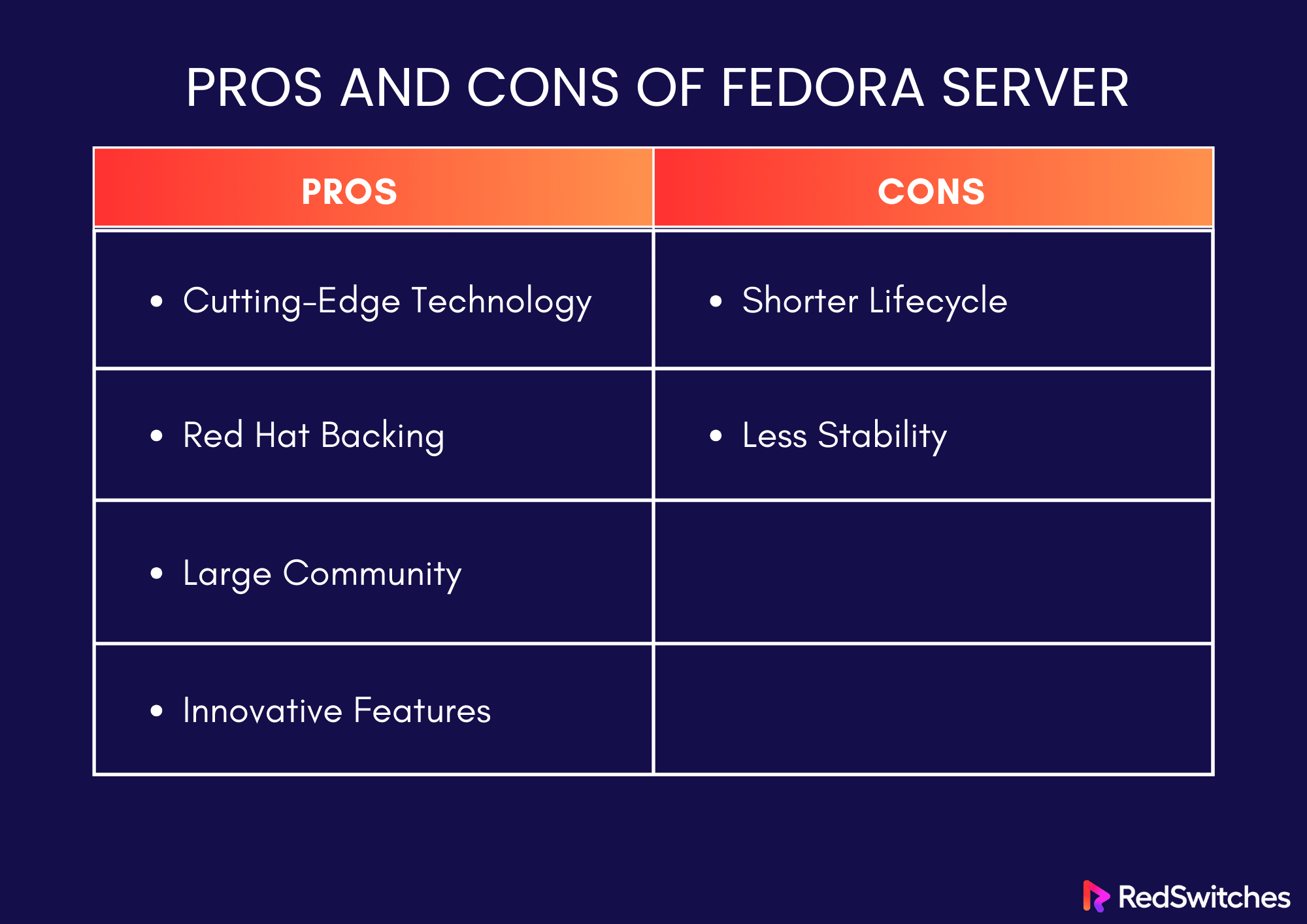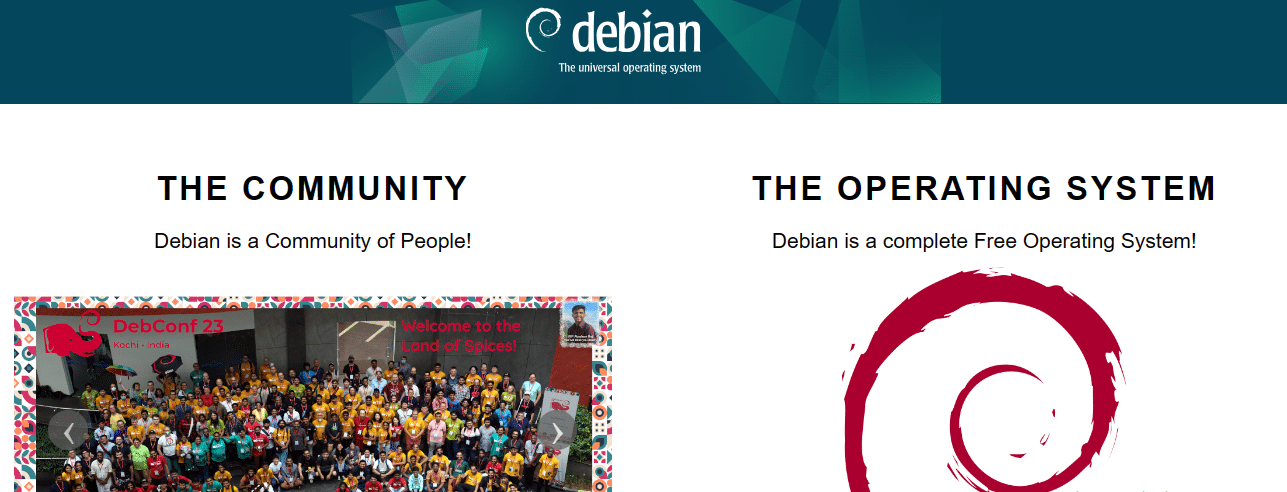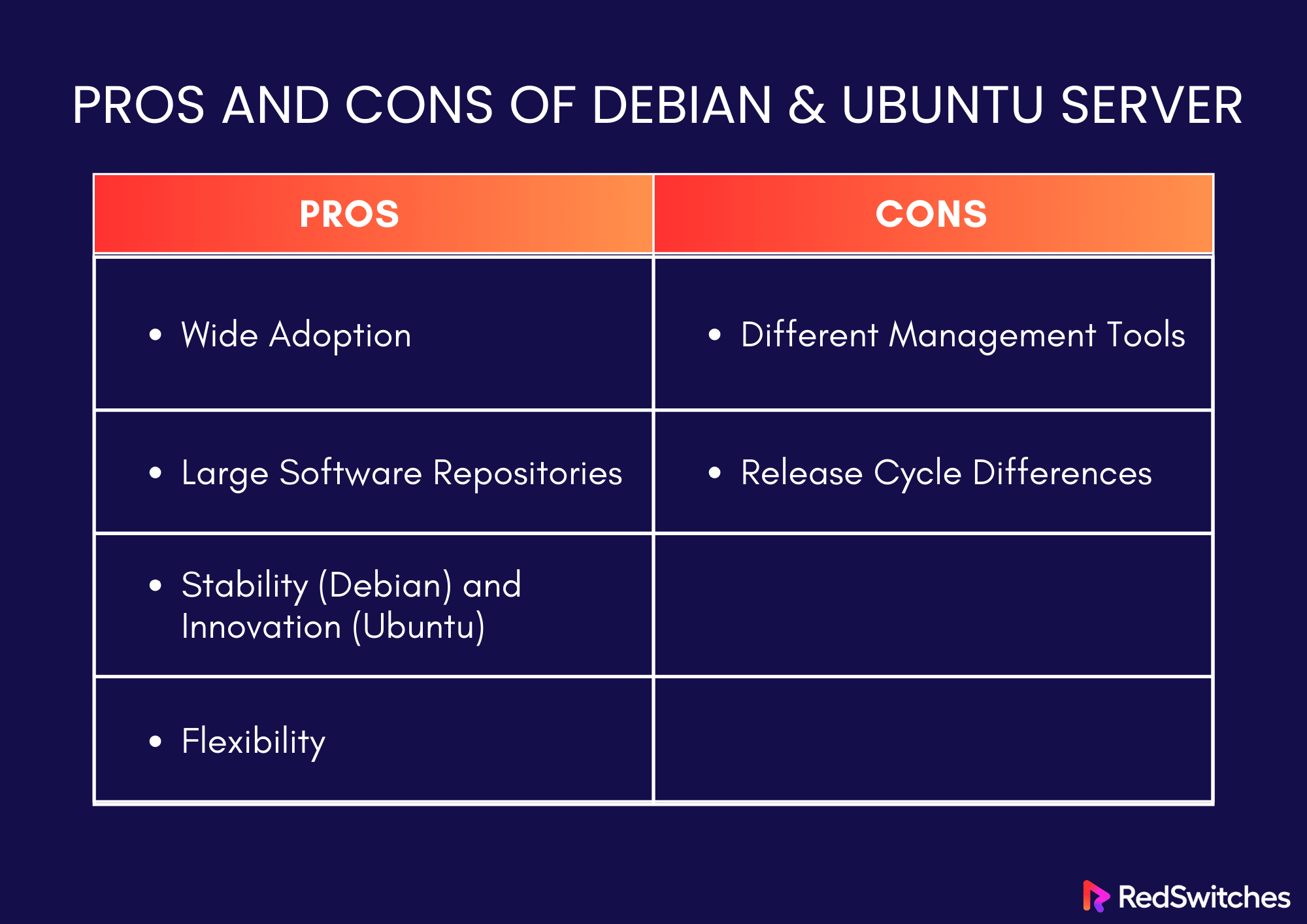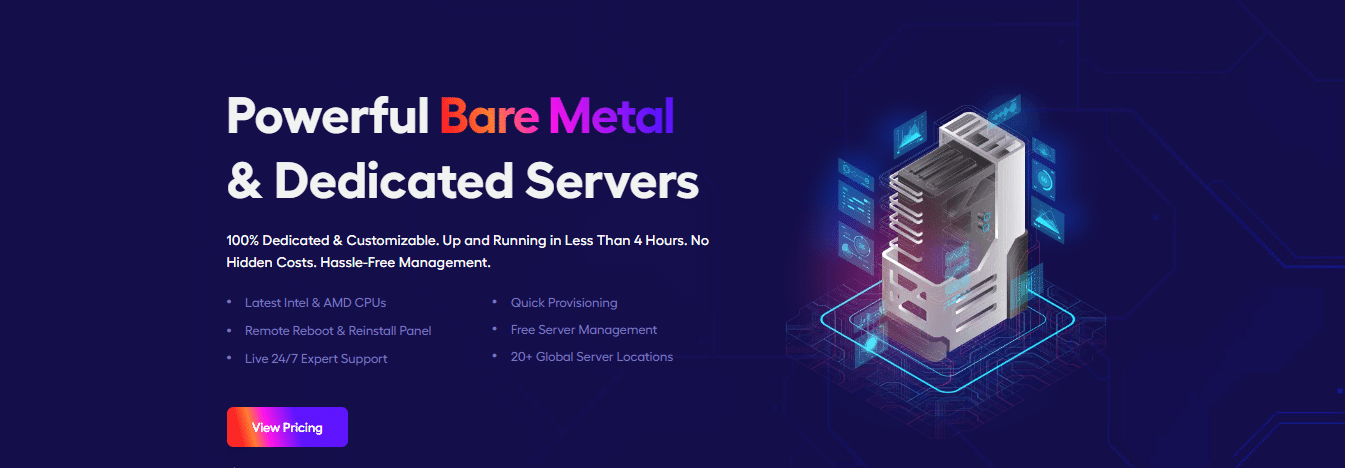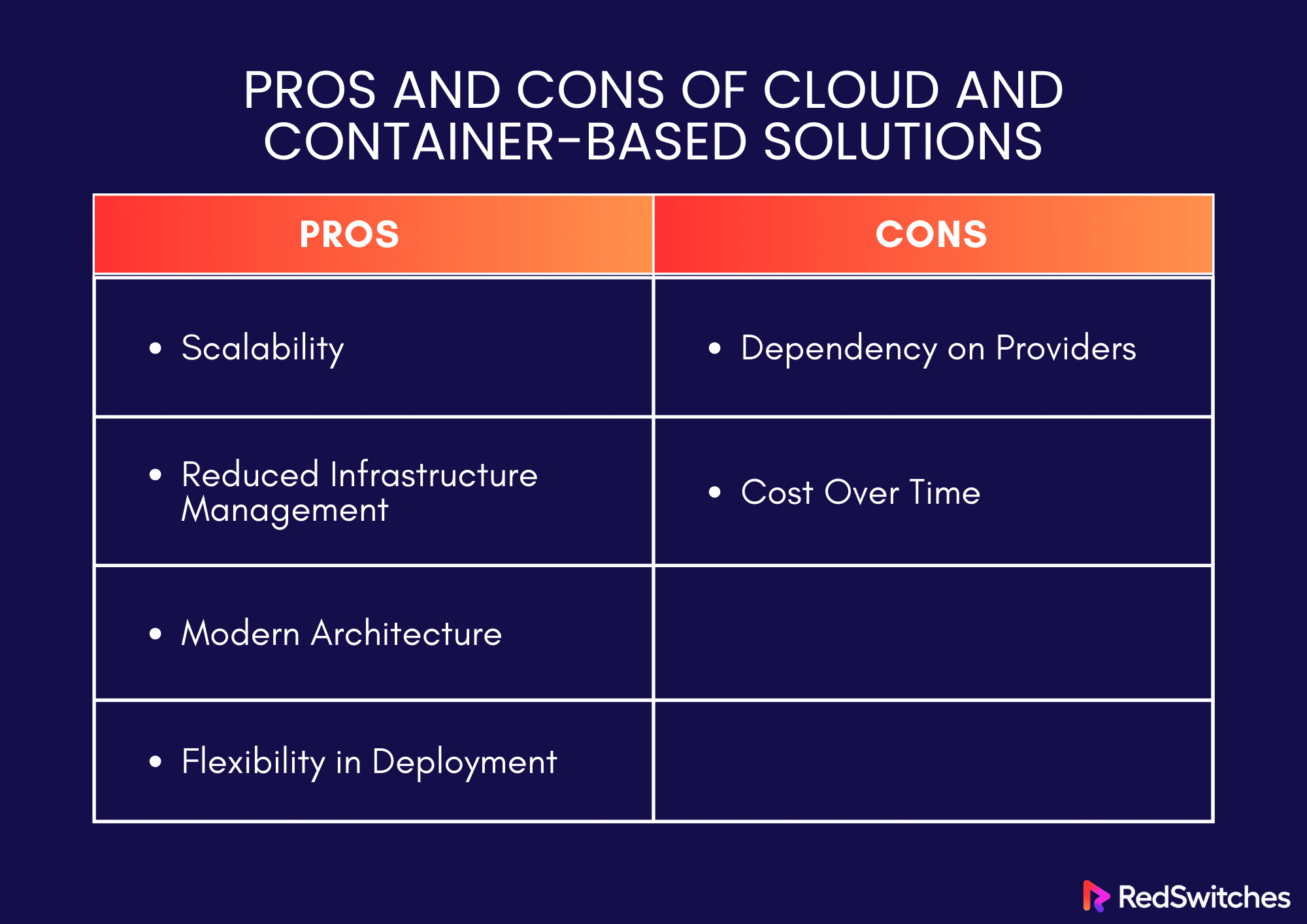Key Takeaways
- CentOS 8 is an operating system known for its stability and long-term support. It is based on the source code of Red Hat Enterprise Linux (RHEL).
- CentOS 8 reached its End of Life (EOL) early due to changes in the upstream provider’s strategy.
- The cessation of CentOS Linux signifies a shift towards CentOS Stream, a rolling-release distribution.
- Users impacted by CentOS 8 EOL have migration options. This includes transitioning to alternative distributions like CentOS Stream, RHEL, or CentOS alternatives like AlmaLinux or Rocky Linux.
- While CentOS 8 may still function post-EOL, users should be aware of potential risks, including security vulnerabilities and lack of updates.
- It’s essential to have a backup plan in place and consider compatibility issues with applications when migrating to a new operating system.
- The community response to the CentOS changes has been mixed. Some express disappointment and seek alternatives, while others embrace CentOS Stream and community-driven solutions.
Change is the only constant in the world of enterprise computing. With the announcement of CentOS 8 End of Life date – December 31st, 2021 – many businesses and IT professionals are navigating a sea of changes and uncertainties. This pivotal moment marks the end and the beginning of a new chapter in server management and infrastructure planning.
We have compiled a comprehensive guide for individuals affected by the CentOS 8 End of Life decision. This blog will delve into what the CentOS 8 End of Life means for current users, exploring viable updates, alternative options, and strategies for seamless migration.
Table Of Contents
- Key Takeaways
- What is CentOS 8?
- CentOS 8 End of Life Migration Options
- Despite EOL, CentOS 8 Still Works
- The Community Response to the CentOS Changes
- CentOS 8 End of Life: What is Next for CentOS?
- Conclusion – CentOS 8 End of Life
- FAQs
What is CentOS 8?
CentOS 8 is a Linux distribution derived from Red Hat Enterprise Linux (RHEL) 8. As an open-source operating system, it was known to be a reliable, robust, and secure choice for enterprises and individuals.
CentOS (Community ENTerprise Operating System) 8 provided a free alternative to RHEL, offering nearly identical functionality without the associated licensing and subscription costs. It was designed to be highly compatible with RHEL, meaning that software and applications developed for RHEL could typically run seamlessly on CentOS 8.
Have you been impacted by the CentOS 8 End of Life decision? Read our informative blog, ‘Eight CentOS 8 Alternatives You Need To Try Right Now!‘ for advice on the best alternatives to CentOS 8.
What’s Going on With CentOS 8 EOL?
CentOS 8 was initially set to have a maintenance life until 2029. However, in a surprising turn of events, the CentOS Project announced CentOS 8 End of Life in December 2021, claiming they would be shifting focus from CentOS 8 to CentOS Stream. This announcement came as a shock for businesses and users who have invested in CentOS 8 for their infrastructure.
CentOS 8 End of Life: Why is CentOS Linux Going Away?
The CentOS 8 End of Life decision was made with several aspects in mind. Major drivers behind this decision include
Aligning with Modern Development Practices
The IT landscape is rapidly evolving, with an increasing emphasis on agile methodologies and continuous integration and delivery (CI/CD). These practices represent a significant shift from traditional software development, where updates and new features are released in large, infrequent batches. The rolling-release model of CentOS Stream aligns well with these modern practices.
By adopting this model, Red Hat aims to make CentOS a more dynamic platform that can adapt quickly to the changing needs of developers and organizations. This approach is particularly beneficial in a cloud-centric world, where rapidly deploying and updating software is crucial. It also facilitates a more iterative development process, allowing for incremental improvements and frequent feedback, leading to more resilient and user-focused software.
Faster Innovation Cycle
In today’s fast-paced technological environment, quickly incorporating and deploying new features, updates, and security patches is vital. CentOS Stream’s rolling-release model is designed to meet these needs, offering a more fluid and responsive development and release cycle. CentOS Stream users get access to the latest updates instead of waiting for periodic major releases as they are developed.
This speeds up the innovation cycle and ensures users are not left waiting for critical updates. The quicker integration of advancements can provide significant competitive advantages to businesses and developers who rely on CentOS for their operations, especially in fields where cutting-edge technology can be a crucial differentiator.
Enhanced Collaboration
Credits: FreePik
One of the most significant aspects of CentOS Stream is its potential to foster enhanced collaboration between the user community and the RHEL development process. In the traditional model, community feedback and contributions might only impact future major releases, often leading to a lag between community innovation and its incorporation into the distribution. With CentOS Stream, there’s a direct channel for the community to contribute to and influence the platform’s ongoing development.
This setup allows Red Hat to leverage the expertise and innovation of the broader open-source community and gives users a sense of ownership and involvement in the development process. Such a collaborative approach will likely result in more user-focused, robust, and well-tested software releases, ultimately benefiting the entire ecosystem of users, developers, and businesses that rely on CentOS.
Are you contemplating between AlmaLinux vs Rocku Linux? Read our blog, ‘AlmaLinux Vs Rocky Linux: Which One Should You Choose?’ for detailed information and effortless decision-making.
CentOS 8 End of Life: What Does This Mean for You?
The CentOS 8 End of Life (EOL) announcement challenges current users, especially those deeply integrating CentOS into their IT infrastructure. The most evident impact is the urgent need to identify and transition to a new operating system that guarantees long-term stability and support. With CentOS 8 ceasing to receive updates or security patches post-EOL, users face critical security vulnerabilities and compliance issues. This situation is particularly risky for businesses where data security and regulatory compliance are paramount.
Organizations using CentOS for critical applications or data storage must expedite their transition plans to ensure uninterrupted service and protection against emerging security threats. This change also means re-evaluating compatibility with existing software and hardware, which could necessitate additional updates or replacements.
The EOL also impacts developers and IT teams, who must adapt to a new environment, potentially retraining staff and revising operational procedures. The CentOS EOL forces a comprehensive reevaluation of IT strategies, demanding immediate action to safeguard business operations and data integrity.
This juncture also allows businesses to align their IT infrastructure with broader organizational goals. It might be an ideal time to embrace more modern, cloud-based solutions if they fit the company’s growth trajectory and digital transformation plans. Ultimately, the CentOS 8 End of Life decision necessitates a holistic view of IT strategy, balancing immediate needs with long-term business objectives and technological trends.
CentOS 8 End of Life Migration Options
With the CentOS 8 End of Life announcement, many users may feel clueless about what path to take. However, there are several migration options to choose from. Below, we have compiled some viable paths for those seeking alternatives to CentOS 8 End of Life:
CentOS Stream
Credits: CentOS Website
CentOS Stream is a rolling-release Linux distribution just ahead of Red Hat Enterprise Linux (RHEL) in development. It’s designed for those who need early access to what’s coming in RHEL. However, it’s important to note that CentOS Stream is more of a testing and development platform and may not be ideal for production environments requiring stable releases.
Pros and Cons of CentOS Stream
CentOS Stream, the successor to the traditional CentOS Linux distribution, represents a significant shift in the Linux landscape. This section delves into the pros and cons of CentOS Stream.
Pros
- Direct Line to Red Hat Enterprise Linux (RHEL): Offers a preview of what’s next in RHEL, ensuring alignment with future updates.
- Active Community: Benefits from a large, active, open-source community for support and development.
- Continuous Updates: Provides rolling updates, offering the latest features and improvements.
- Familiarity: Retains CentOS’s operational feel, easing the transition for current CentOS users.
Cons
- Stability Concerns: As a rolling release, it might introduce instability compared to a fixed-release cycle.
- Not Suitable for Production: Frequent updates may not be ideal for production environments requiring long-term stability.
Also Read: CPanel Vs Plesk: Choosing The Best Web Hosting Control Panel.
Red Hat Enterprise Linux (RHEL)
Credits: Red Hat Enterprise Linux Website
Transitioning to RHEL is a straightforward option for those who need enterprise-level stability and support. Red Hat offers free RHEL subscriptions for small production deployments (up to 16 systems) and development purposes. Paid subscriptions are required for larger deployments.
Pros and Cons of Red Hat Enterprise Linux (RHEL)
Red Hat Enterprise Linux (RHEL), a widely used commercial Linux distribution, offers a range of features suitable for enterprises. However, like any technology, it comes with its own set of advantages and drawbacks. Let’s explore the pros and cons of RHEL:
Pros
- High Stability and Reliability: Well-known for its enterprise-grade stability and performance.
- Strong Support: Offers comprehensive support options, including professional and enterprise support.
- Security: Regular, reliable security updates and patches.
- Ecosystem: Access a vast ecosystem of software and tools tailored for RHEL.
Cons
- Cost: The subscription-based model can be expensive for some organizations.
- Complex Licensing: The licensing structure can be complex and might not suit smaller deployments.
Credits: AlmaLinux Website
AlmaLinux is a community-driven, free, open-source enterprise-level Linux distribution that is binary compatible with RHEL. It emerged as a direct response to the CentOS 8 EOL and aimed to fill the gap for users needing a stable, long-term support option.
Pros and Cons of AlmaLinux
AlmaLinux, emerging as a popular alternative in the wake of CentOS’s shift to a rolling release model, brings its strengths and weaknesses. Let’s delve into the pros and cons of AlmaLinux:
Pros
- Community-Driven: Built and maintained by the community, ensuring responsiveness to user needs.
- Binary Compatible with RHEL: Offers seamless transition for RHEL and CentOS users.
- Free to Use: No cost involved, making it an attractive option for budget-conscious organizations.
- Corporate Support: Backed by CloudLinux, offering potential enterprise support.
Cons
- Newer Project: Less established than more mature alternatives like RHEL.
- Limited Track Record: Being newer, it has a shorter track record in the industry.
Credits: Rocky Linux
Like AlmaLinux, Rocky Linux is another community-driven, enterprise-ready operating system designed to be 100% bug-for-bug compatible with RHEL. The original CentOS founder developed it, and it has gained significant traction as a CentOS alternative.
Pros and Cons of Rocky Linux
Rocky Linux, another strong contender in the Linux distribution landscape, especially after the transition of CentOS to a stream release, offers a unique set of advantages and limitations. Here’s an overview of the pros and cons of Rocky Linux:
Pros
- Community Focus: Strong emphasis on community involvement and open-source ethos.
- RHEL Compatibility: Designed to be bug-for-bug compatible with RHEL.
- Transparent Governance: Operates with a transparent governance model, ensuring user trust.
- Stability and Performance: Aims to match RHEL’s stability and performance.
Cons
- New Entrant: As a relatively new player, it lacks a long-term proven track record.
- Community Reliance: Heavily reliant on community support, which may vary in responsiveness.
Credits: Oracle Linux Website
Oracle Linux is another RHEL-compatible distribution. It is free to download and use, including updates and errata. Oracle Linux might be an attractive option for those already using other Oracle products and services.
Pros and Cons of Oracle Linux
Oracle Linux, a distribution developed and maintained by Oracle Corporation, is tailored for enterprise environments and offers distinct features and considerations. Let’s explore the pros and cons of Oracle Linux:
Pros
- Optimized for Oracle Products: Ideal for environments using Oracle software and databases.
- Free to Download and Use: Offers a free version with optional paid support.
- Ksplice for Zero-Downtime Kernel Updates: Unique feature for updating kernels without rebooting.
- RHEL Compatible: Compatible with RHEL, ensuring ease of transition.
Cons
- Oracle-centric: Best suited for Oracle environments, which might not appeal to all users.
- Mixed Community Perception: Oracle’s broader reputation may affect the perception and adoption of Oracle Linux.
Credits: Fedora Server Website
Fedora Server is an option for those who prefer staying within the Red Hat ecosystem but seek an alternative to CentOS Stream. However, it’s more cutting-edge and less stable compared to RHEL, making it more suitable for development environments rather than critical production servers.
Pros and Cons of Fedora Server
Fedora Server, a part of the Fedora Project, is a powerful and flexible server operating system known for its cutting-edge features and community-driven development. Here’s an overview of the pros and cons of Fedora Server:
Pros
- Cutting-Edge Technology: Often the first to incorporate the latest open-source software developments.
- Red Hat Backing: Benefits from Red Hat’s involvement, ensuring stability and support.
- Large Community: Supported by a large and active community.
- Innovative Features: Regularly introduces new and experimental features.
Cons
- Shorter Lifecycle: A rapid release cycle means each version has a shorter support lifecycle.
- Less Stability: More suited for testing environments than long-term stable production use.
Debian or Ubuntu Server
Credits: Debian
While not directly related to the CentOS/RHEL ecosystem, Debian and Ubuntu Server are popular alternatives for Linux servers. These distributions are known for their stability and extensive community support. However, migrating to them from CentOS/RHEL would require adapting to a different package management system and possibly different system administration practices.
Pros and Cons of Debian and Ubuntu Server
Debian and Ubuntu Server are two of the most popular Linux distributions, each with its unique characteristics and user base. Here, we’ll explore the pros and cons, highlighting their strengths and weaknesses.
Pros
- Wide Adoption: Both are widely used with strong communities, ensuring good support and resources.
- Large Software Repositories: Extensive repositories for easy software installation and management.
- Stability (Debian) and Innovation (Ubuntu): Debian is known for stability, while Ubuntu offers more up-to-date software.
- Flexibility: Suitable for both new users and experienced administrators.
Cons
- Different Management Tools: Transitioning from CentOS might require learning new system management tools.
- Release Cycle Differences: Their release cycles and update philosophies differ from CentOS/RHEL.
Cloud or Container-based Solutions
Credits: RedSwitches
For some users, migrating to cloud-native solutions or containerizing their applications can be a strategic move. Platforms like Kubernetes, Docker, or managed cloud services offer flexible, scalable, and often cost-effective options.
Pros and Cons of Cloud and Container-Based Solutions
Cloud and container-based solutions are revolutionizing how businesses operate, offering flexibility, scalability, and efficiency. However, they also come with their own set of challenges and considerations. Let’s explore the pros and cons of each.
Pros
- Scalability: Easily scale resources up or down based on demand.
- Reduced Infrastructure Management: Outsourcing hardware management to cloud providers.
- Modern Architecture: Facilitates modern, microservices-based architecture.
- Flexibility in Deployment: Offers various deployment options and platforms.
Cons
- Dependency on Providers: Reliance on some cloud providers can lead to vendor lock-in.
- Cost Over Time: Ongoing costs can be significant, especially for larger deployments.
Also Read: CyberPanel Vs CPanel: Best Hosting Control Panel For 2024.
Despite EOL, CentOS 8 Still Works
Although CentOS 8 End of Life was announced – it is still operational. However, it no longer receives updates, including security patches, from the CentOS project. Regardless, if you still plan on using CentOS 8, there are several factors you must consider, including:
Use at Your Own Risk
After the End of Life (EOL) date, CentOS 8 entered a phase where it no longer receives updates from its maintainers. This includes critical security patches for protecting a system against vulnerabilities and cyber threats. The absence of these updates means that any new vulnerabilities discovered after the EOL date will remain unaddressed by the CentOS project.
Consequently, systems running CentOS 8 become increasingly exposed to security risks over time. This exposure can lead to potential breaches, making it a significant gamble to continue using CentOS 8 in this unprotected state. Organizations and individuals still operating on CentOS 8 must be aware that they are doing so at their own risk, facing a growing likelihood of encountering unpatched security flaws that could compromise their systems and data.
Have a Backup Plan
Given these risks, having a comprehensive backup plan becomes more crucial than ever. Regular and systematic backups of critical data are a vital defense strategy against the consequences of potential security breaches or system failures. By maintaining up-to-date backups, organizations can ensure that they have a reliable fallback option.
In case of a system compromise or failure, recent backups can differ between a minor setback and a catastrophic data loss. It’s essential to store these backups securely and, if possible, in multiple locations to safeguard against various forms of data loss, including physical disasters. This data management and security approach can provide some assurance and operational continuity in a landscape where the primary operating system is no longer supported.
Applications May Not Support the Target OS
Another critical aspect to consider is the support of third-party applications for CentOS 8. Post-EOL, many software developers and vendors may choose not to support their applications on CentOS 8. This is because developers typically align their support structures with the lifecycle of the operating systems they target. Users of CentOS 8 may encounter difficulties with receiving updates, maintaining compatibility, and accessing technical support for various applications.
This lack of support can lead to a range of issues, from minor inconveniences to major disruptions in functionality. It may force organizations to either forego important software updates or migrate to alternative platforms that are actively supported.
Thus, assessing the compatibility and support of essential applications becomes critical for anyone considering continuing with CentOS 8 post-EOL.
The Community Response to the CentOS Changes
After the CentOS 8 End of Life decision, the community was left shocked. Below, we explore the community’s response once the CentOS 8 End of Life decision was released:
Surprise and Disappointment
The CentOS community, comprising many users and organizations, was primarily taken aback by the abrupt change in the project’s direction. CentOS has established itself as a bastion of stability and predictability, particularly vital in enterprise environments where consistency and long-term support are paramount.
The shift to a rolling release model in CentOS Stream, characterized by more frequent updates, was perceived as a departure from the stability and reliability that CentOS Linux had come to symbolize. This change was not just a technical adjustment but also symbolized a significant shift in philosophy, leaving many feeling uncertain about the future reliability of their systems based on CentOS.
Concerns about Stability and Predictability
With CentOS Stream adopting a rolling release model, there were immediate concerns about its ability to maintain the high level of stability that its predecessor was known for. This change introduced apprehensions regarding the potential for disruptions in critical systems that heavily relied on the predictability of CentOS.
The need for more frequent testing and updates posed a challenge to IT departments and system administrators, who were accustomed to traditional CentOS’s slower, more deliberate update cycle. The worry was about the increased workload and the potential for untested updates to introduce instability in critical environments.
Looking for Alternatives
Following the announcement, there was a noticeable movement within the CentOS community to seek out alternative distributions that could replicate the experience provided by traditional CentOS. This search was not just about finding a replacement operating system but also about finding a community and a development model that aligned with the expectations and needs of CentOS users.
Distributions like AlmaLinux, Rocky Linux, and Oracle Linux garnered significant attention as they positioned themselves as viable replacements. Each of these distributions aimed to capture the essence of what made CentOS popular – stability, reliability, and community-driven development – to fill the void left by CentOS 8’s end of life.
Appreciation of Open Source Dynamics
A segment of the community viewed the shift to CentOS Stream as a natural evolution within the open-source ecosystem. This group saw the change as a potential positive, bringing CentOS closer to the forefront of RHEL development.
This proximity to the upstream source was a chance to benefit from more rapid and innovative developments, potentially leading to advancements and improvements that would have been slower or less likely under the traditional CentOS model. This perspective recognized the dynamic nature of open-source projects and their continual evolution based on changing technologies and user needs.
Increased Interest in CentOS Stream
Despite the initial wave of resistance and uncertainty, a portion of the CentOS community began to show interest in CentOS Stream’s possibilities. Previous access to new features and enhancements appealed to some developers and organizations.
This approach was seen as a way to stay ahead of the curve, especially for those who prioritized innovation and were prepared to manage the faster pace of updates. CentOS Stream presented an opportunity to be more closely aligned with the latest developments in RHEL, potentially offering advantages in terms of new technologies and capabilities.
Criticism and Distrust
The transition to CentOS Stream also sparked criticism and suspicion towards Red Hat, the company behind CentOS. Many community members perceived this move as Red Hat prioritizing its commercial interests over the needs and expectations of the CentOS community.
There was a palpable distrust among some users, concerned about the long-term implications of Red Hat’s stewardship of the CentOS project. These concerns were about the immediate changes and what they signified for CentOS’s future direction and independence.
Adaptation and Acceptance
Over time, a portion of the CentOS community began to adapt to the change. This adaptation was not uniform; while some users migrated to alternative distributions that promised a more familiar experience, others embraced CentOS Stream and began integrating it into their workflows.
The latter group acknowledged the benefits of having a distribution that closely tracks ahead of RHEL, seeing it as an opportunity to benefit from the latest developments and improvements in the RHEL ecosystem.
Collaboration and Community Forks
The shift in CentOS’s direction also catalyzed collaboration and the creation of new community-driven projects. AlmaLinux and Rocky Linux emerged as prominent examples, driven by the community’s desire to have a CentOS-like distribution that adhered to the traditional, stable, and predictable release model.
These projects demonstrated the open-source community’s ability to mobilize, collaborate, and create alternatives in response to changes that affect their operations and workflows. They highlighted the resilience, innovation, and resourcefulness inherent in the open-source community, showcasing its capacity to adapt and evolve in the face of significant changes.
Are you on the lookout for the perfect Server OS? Read our comprehensive blog, ‘CentOS Vs Debian: Find The Right Server OS.’
CentOS 8 End of Life: What is Next for CentOS?
With the CentOS 8 End of Life decision, significant changes have reshaped the future of the CentOS project. The key transition is the shift from the traditional CentOS Linux to CentOS Stream. Here’s what’s next for CentOS and what it means for its users:
CentOS Stream
- Rolling Release Model: CentOS Stream now operates on a rolling release model. This means it will continually receive updates and features ahead of Red Hat Enterprise Linux (RHEL). This is a departure from the previous approach, where CentOS was essentially a downstream, mirror version of RHEL.
- Development Bridge between Fedora and RHEL: CentOS Stream will serve as a midpoint between Fedora (which acts as an upstream for RHEL) and RHEL. It will preview the next minor RHEL release, offering a unique blend of stability and cutting-edge features.
- Focus on Collaboration: The new model fosters closer collaboration between the community, Red Hat, and other stakeholders. This allows for more direct feedback and contribution to the future versions of RHEL.
- Implications for Users: CentOS Stream is more dynamic than its predecessor but may not suit environments requiring long-term stability without frequent changes. Users who depend on the predictability and stability of CentOS 8 may need to adapt their strategies or seek alternative distributions.
Conclusion-CentOS 8 End of Life
As we close our insightful journey through the implications and pathways following the CentOS 8 End of Life, it’s clear that change, though challenging, brings opportunities for growth and innovation. Whether you’re considering migrating to CentOS Stream, exploring alternatives like AlmaLinux or Rocky Linux, or transitioning to a cloud-based solution, the key is making informed decisions that align with your organizational goals.
At RedSwitches, we understand the intricacies of these transitions and offer specialized services to support you every step of the way. From expert consultations to tailor-made hosting solutions, RedSwitches is your trusted partner in navigating the post-CentOS 8 landscape. Embrace the future confidently with RedSwitches today, where we turn challenges into opportunities and new beginnings.
FAQs
Q. Is CentOS 8 end of life?
Yes, CentOS 8 EOL date was December 31, 2021.
Q. What is replacing CentOS 8?
CentOS 8 has been succeeded by CentOS Stream, which serves as a rolling-release distribution that aligns closely with Red Hat Enterprise Linux (RHEL).
Q. How old is CentOS 8?
CentOS 8 was released in September 2019, making it approximately 2 years old at its end of life.
Q. Is CentOS 9 end of life?
CentOS Stream 9 (released in December of 2021) will remain the active CentOS Stream version until it is replaced by CentOS Stream 10. Currently, the end of life for CentOS Stream 9 is similar to RHEL 9’s end of life, which is expected to happen in 2027.
Q. Which CentOS version is better?
The choice between CentOS versions depends on your specific needs. CentOS Stream offers a rolling-release model, while CentOS Linux provides a traditional stable release. Your preference will depend on whether you prioritize stability or access to the latest features and updates.
Q. When is CentOS 8 stream EOL?
CentOS 8 stream EOL is expected to be on 31 May 2024.
Q. When is CentOS 8 stream EOL?
CentOS 8 stream EOL is expected to be on 31 May 2024.
Q. What is CentOS 8 End of Life (EOL)?
CentOS 8 End of Life (EOL) refers to the date when CentOS 8 will no longer receive updates or support from the CentOS project.
Q. When is the CentOS 8 End of Life (EOL) date?
The CentOS 8 End of Life (EOL) date is December 31, 2021.
Q. Why is CentOS 8 reaching its End of Life (EOL)?
CentOS 8 is reaching its End of Life (EOL) due to the shift in focus to CentOS Stream 8, a rolling-release distribution that serves as the upstream for Red Hat Enterprise Linux (RHEL).
Q. How does CentOS 8 reaching End of Life (EOL) affect CentOS 7 users?
CentOS 8 reaching End of Life (EOL) means that CentOS 7 users will need to consider migrating to an alternative operating system, as CentOS 7 will also reach its End of Life in 2024.
Q. What options do CentOS 8 users have after reaching End of Life (EOL)?
CentOS 8 users can migrate to CentOS Stream 8, explore commercial support options, or consider alternatives such as Red Hat Enterprise Linux (RHEL) or other community-supported distributions.
Q. How can CentOS 8 users migrate away from CentOS Linux after reaching End of Life (EOL)?
CentOS 8 users can migrate away from CentOS Linux by following migration guides provided by the CentOS project, exploring support options for extended lifecycle support, or considering alternative distributions.
Q. Will there be any extended support available for CentOS 8 after its End of Life (EOL) date?
Some vendors may offer extended support for CentOS 8 after its End of Life (EOL) date, but users should verify the terms and availability of such support directly with the vendors.
Q. What are the implications of CentOS 8 reaching its End of Life (EOL) for Linux users?
The End of Life (EOL) of CentOS 8 highlights the importance of staying informed about changes in the Linux ecosystem, considering migration plans proactively, and exploring alternative distributions to meet specific needs.
